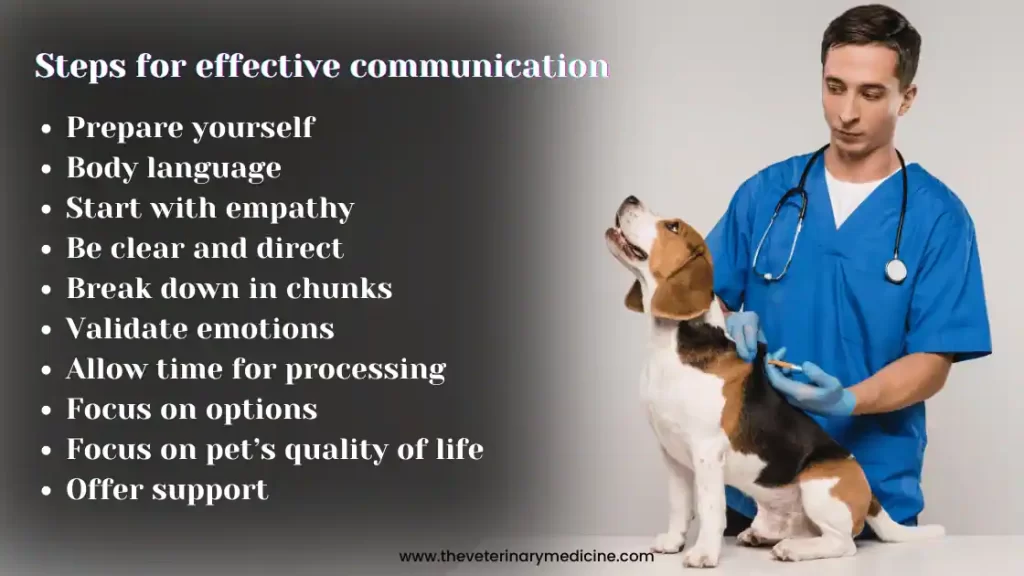How To Deliver Bad News as A Doctor (Veterinarian)
Everyone puts their best efforts both the veterinarian and pet parents to save and maintain quality of life of pets. But as nothing is permanent in this mortal world and has an end. Pets may suffer from variety of life-threatening conditions like cancer, poisoning, accidents, organ failure, strokes, cardiac problems and lastly aging or sometimes euthanasia which brings companionship to an end. When a pet is in the hospital or veterinary setup and sadly no more or get diagnosed with a life-threatening ailment than delivering bad news to a pet parent is a sensitive situation and challenging aspect of veterinary practice. Though reaction of pet parents may be different in each situation but here are some tips to navigate it with compassion and clarity:
Before the Conversation:
1. Prepare Yourself:
Before meeting with the pet parents, ensure you have all the relevant information at hand. Take a deep breath, think about pet parents’ perspective and gather your thoughts. Review the pet’s medical history, diagnostic results, and treatment options thoroughly. Having a clear plan for the conversation in such situations will help you stay focused and empathetic.
2. Privacy & Comfort:
Choosing right setting is important. If possible, then choose a quiet, private space a bit away from busy areas like OPD or Reception area for the conversation where pet parents feel comfortable expressing their emotions. Ensure that tissue papers are available and you won’t be interrupted during the discussion.
During the Conversation:
1. Start with Empathy:
Understand that pet has been / is a part of family and always acknowledge the pet’s importance in their life and express your own concern. Start the conversation by acknowledging the pet parents’ emotions. Use empathetic language and a gentle tone. Starting conversation with phrases like, “I’m so sorry to have to tell you this,” or “I know how much [pet’s name] means to you,” can help you in setting the tone.
2. Be Clear and Direct:
Diagnosis of life-threatening conditions like metastatic mass with poor prognosis or loss of life is irreplaceable so don’t sugarcoat the situation. Prefer using plain or simple language, avoid technical or medical jargon, while still being honest about the situation, diagnosis or prognosis.
3. Break it Down:
Try to deliver information in manageable chunks and check for understanding throughout. Ask open-ended questions like in case of euthanasia, “Can you tell me how you’re feeling about your decision or informed about the condition?” or “Do you have any questions before I proceed?”
Or in case of loss of life due to a complication be like “It was unfortunate that he had some anaesthetic/ surgical or stroke /other complication”. Or in case of unfortunate diagnosis be like “it is not so common but your pet has hard luck and got diagnosed with this condition”.
4. Validate their Emotions:
Let them cry, express anger, or whatever they need to do. Avoid saying things like, “At least they lived a good life,” or “I understand,” as this can minimize their feelings. Or use these terms wisely after expression of the feelings.
5. Allow Time for Processing
Give pet parents time to understand the situation and absorb the information. Pause frequently to check their understanding and to allow them to ask questions. It’s normal for them to need a few moments to process the news.
6. Focus on Options:
Except in the situation of loss of life; once they’ve processed the news, discuss possible treatment plans, further diagnostic options, pain management options, or end-of-life care or euthanasia, depending on the situation. Discuss the next steps clearly and calmly. If euthanasia is being considered, discuss it with sensitivity and provide information about the process and aftercare options.

After the Conversation:
1. Offer Support:
Don’t sound so much professional. Offer emotional support and reassurance. Let them know you’re available to answer questions or provide further support and show them humane side of profession. Let them know that their feelings are valid and that it’s okay to be upset. You might offer resources like pet bereavement hotlines, websites, counselling or support groups, if any. These resources can offer additional comfort and guidance as they navigate their emotions.
2. Respect their Needs:
Some pet parents may want immediate information, while others may need time to process. Be patient and respect their pace.
3. Follow Up:
If you want to stay connected then consider follow up with a phone call or a message a few days later to check on how they are coping. This gesture shows that you care about their well-being and are there for them during this difficult time.
Additional Tips:
- Body Language Matters: Maintain eye contact, use a gentle tone, and avoid fidgeting.
- Be Prepared for Different Reactions: People cope with grief differently. Be prepared for anger, denial, or sadness.
- Focus on the Pet’s Quality of Life: When discussing options, emphasize keeping the pet comfortable and happy for their remaining time.
- Self-Care for Veterinarians: Finally, remember to take care of yourself. Delivering bad news can be emotionally taxing. Seek support from colleagues, take breaks, and consider professional counselling if needed to maintain your emotional well-being.
Conclusion:
Delivering bad news to pet parents is never easy, but with preparation, compassion, and clear communication, you can help them through one of the toughest times in their lives. By following these tips, you can ensure that these difficult conversations are handled with the utmost care and empathy. You can you can provide the support and care that pet parents need during their most challenging moments. Remember, the goal is to deliver the news with honesty and compassion, while offering support and guidance during this difficult time.





